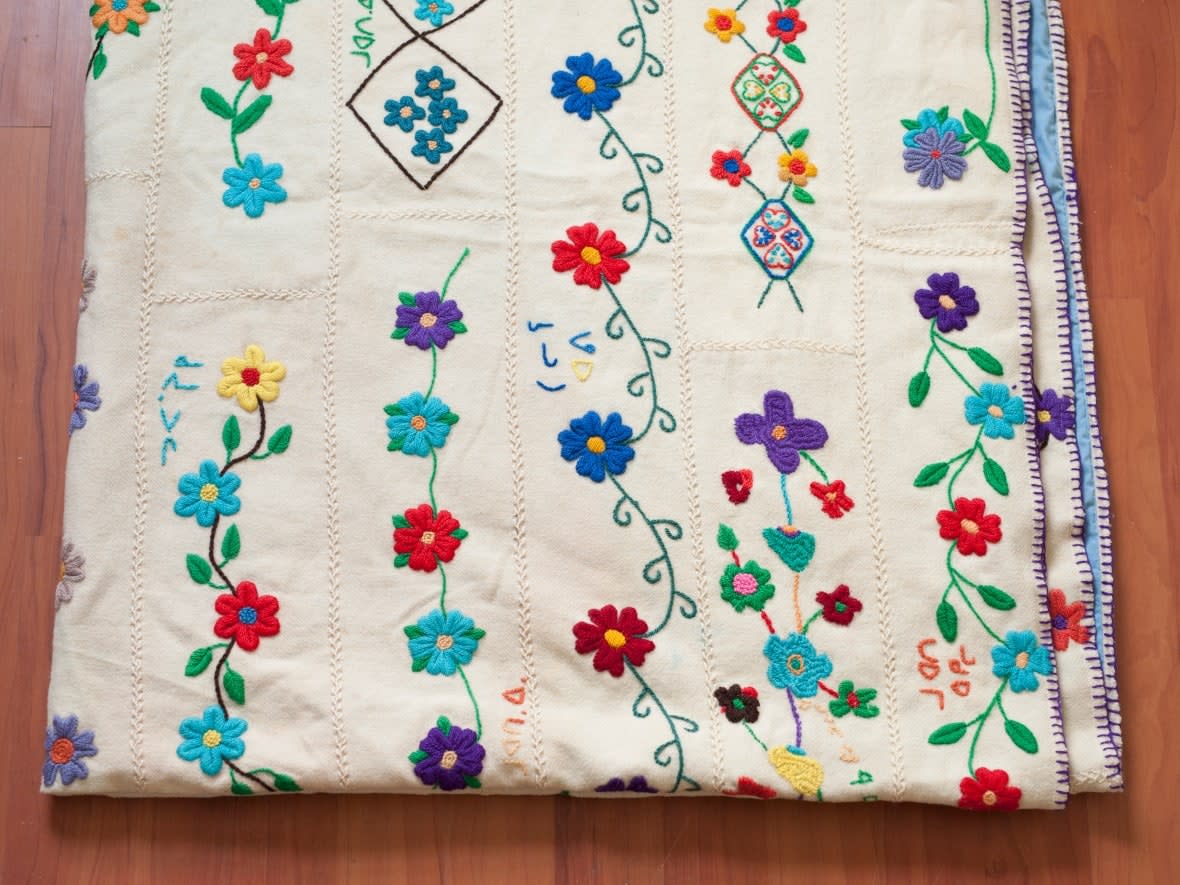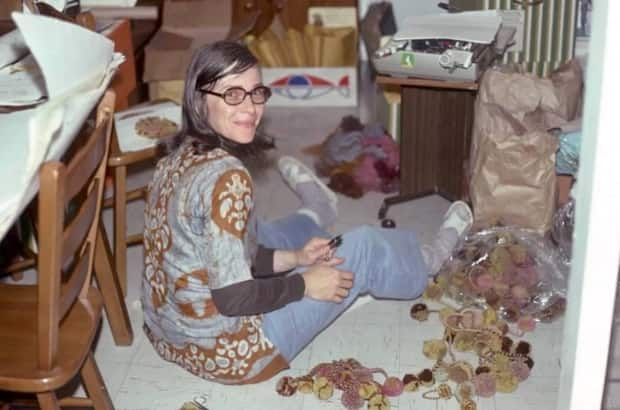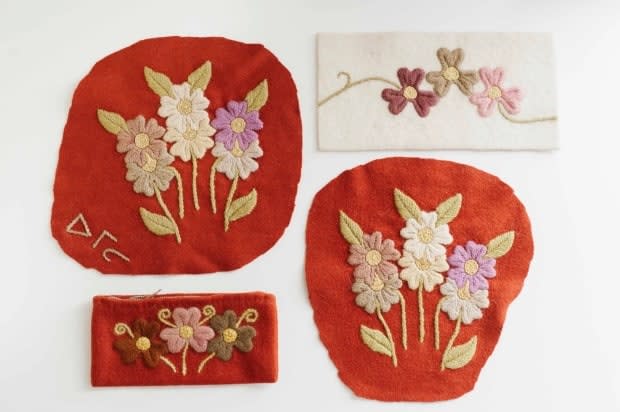Search continues for handmade Inuit crafts lost in transit

A crate of precious handmade articles from Taloyoak, Nunavut, remains missing after nearly a year, and stories conflict about where and how it got lost.
The items date back 50 years, to when a group of women in Taloyoak started the Arnaqarvik collective.
For the 50th anniversary celebration, a collection of their works was shipped to Taloyoak and then back south to the Ontario home of one of Arnaqarvik's co-founders, Judy McGrath.
But after arriving back in Ottawa on the return trip, one of four crates never reached McGrath.
"I am heartsick over the missing crate, especially the large embroidered blanket which was made of sample embroidery from every woman working on the project and included their names embroidered in syllabics," McGrath said.
In 1971, McGrath moved from Newfoundland to Taloyoak (then Spence Bay) for her husband John's posting as an economic development officer for the Northwest Territories.
While in Taloyoak, she and Arnaoyok Alookee worked on building a line of fashion and other arts and crafts items, including dolls. Their creations bridged the North and South, attracting attention as far away as New York.

McGrath eventually left Taloyoak, but she kept in touch, collecting many of Arnaqarvik's works.
Today's Arnaqarvik project, now online, began as a partnership between Cambridge Bay's Pitquhirnikkut Ilihautiniq/ Kitikmeot Heritage Society, and two of the original collective's founders, McGrath and Arnoyak Alookee, to celebrate the 50th anniversary of the Taloyoak women's craft movement.
In 2012, Pitquhirnikkut Ilihautiniq also received a large donation of clothing and artwork from Eva Strickler, an microbiologist who had worked with Arnaqarvik.
In 2017, they began working with McGrath to document her collection of the group's work.
The team travelled to Taloyoak in October 2021 with an extensive collection of early Arnaqarvik sewing, fashion and dolls.
Among them was the prized blanket.
"My husband John had to leave Taloyoak before I did so the women made the sampler into a lined blanket and gave it to him to keep him warm and so he would remember all of them," McGrath said.
"When we showed all the artifacts to the community and school in October, we had to divide them up into three shows, but after the first one we realized we had to include the blanket in all the shows because there was so much interest in it from all ages. The school kids even took photos of it and had sketchpads to draw out embroidery patterns of people in their families. "
The blanket and other pieces were to become part of a travelling exhibition.

But McGrath said the crate with the blanket and many other items disappeared between the cargo in Ottawa and the courier truck to Pakenham, Ont. on the return from Taloyoak.
Brendan Griebel, the historical society's manager of collections and archives travelled to the Canadian North warehouse in Ottawa last November and said he found an employee who "distinctly remembered" giving all four crates to Purolator.
But this week Courtney Reistetter, Purolator's senior manager of corporate communications, told a different story.
"We were made aware of this case last year and conducted an internal investigation, however, unfortunately were unable to conclude that the shipment was ever picked up and moved through our system, and the case was closed," Reistetter said.
When a shipment is created in Purolator's system, a PIN (parcel identification number) is generated before a courier picks up the shipment, she said.
When a courier picks up the shipment, a pick-up scan is applied to record Purolator taking possession of the item, and then the piece is processed through the network, she said.
"There were four PINs associated with four shipments — three of which were delivered. We established we have no records of any scans in our system on the shipment (PIN) in question after it was originally created, which suggests Purolator never took possession of the item. "
The historical society said it would be grateful for any efforts to help them identify and re-locate these missing items that can be seen on the Arnaqarvik website.
If you have information about the artworks, you can contact the Pitquhirnikkut Ilihautiniq / Kitikmeot Heritage Society.


